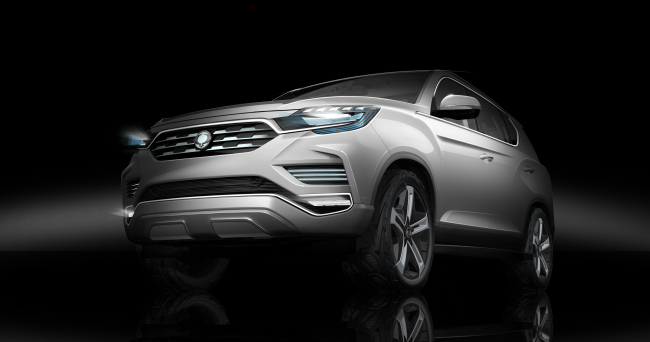SsangYong partners Posco for safe, high performance SUV
By 줄리 잭슨 (Julie Jackson)Published : Feb. 26, 2017 - 17:44
SsangYong Motor has partnered with South Korea’s largest steelmaker Posco to roll out a premium sport utility vehicle that boasts safety and performance.
The tie-up between the two firms was highlighted at the SUV Tech Forum, organized by SsangYong and Posco in Seoul on Friday, with industry experts in attendance.
Slated for launch in May, SsangYong’s upcoming SUV Y400 uses Posco’s advanced high-strength steel for its vehicle frames.
“Posco has researched and developed light yet safe steel products, while SsangYong designed the vehicle to utilize the steel to produce a high performance car,” Lee Hong-woo, principal researcher at Posco said at the forum. “Collaboration between the two firms -- which started from the initiation stage of the new car development -- will continue to strengthen to produce quality cars.”
The tie-up between the two firms was highlighted at the SUV Tech Forum, organized by SsangYong and Posco in Seoul on Friday, with industry experts in attendance.
Slated for launch in May, SsangYong’s upcoming SUV Y400 uses Posco’s advanced high-strength steel for its vehicle frames.
“Posco has researched and developed light yet safe steel products, while SsangYong designed the vehicle to utilize the steel to produce a high performance car,” Lee Hong-woo, principal researcher at Posco said at the forum. “Collaboration between the two firms -- which started from the initiation stage of the new car development -- will continue to strengthen to produce quality cars.”

“By combining the latest generation of frames and the car, we will introduce a SUV with improved quality and safety for drivers and passengers as well as other drivers on the road,” Lee Soo-won, a senior managing director at SsangYong Motor said.
The Y400 will have a front-engine, rear-wheel drive platform to achieve better weight balance, the company said.
The vehicle is also based on the traditional body-on-frame chassis, as opposed to the monocoque -- in which a vehicle’s body and frame are built together as a single structure -- that is used in a majority of crossover cars for lighter weight and to reduce costs.
While a truck-like body-on-frame chassis is usually more expensive, it has more advantages, experts say.
“Cars with a body-on-frame chassis deliver a quiet cabin as the frame absorbs noise levels and vibration from the road,” said Lee Chang-ro, a professor of mechanical and automotive engineering at Woosuk University. “It also boasts an enhanced driving experience on rough or unpaved roads.”
“In the coming years, more large sport utility vehicles are expected to implement the body-on-frame chassis for maximum towing capacity and front-engine, rear wheel drive for high performance,” Lee said.
According to Han Byoung-kee, a professor emeritus of Hongik University, the chassis has to absorb as much energy as possible during a crash so as to result in the smallest impact and prevent human injury. He also added that large SUVs with a body-on-frame chassis have lower fatality rates than smaller SUVS that use a single body.
“The automaker’s design of the frame affects the safety of the car and its passengers,” said Han.
By Ahn Sung-mi (sahn@heraldcorp.com)


















![[Today’s K-pop] Treasure to publish magazine for debut anniversary](http://res.heraldm.com/phpwas/restmb_idxmake.php?idx=642&simg=/content/image/2024/07/26/20240726050551_0.jpg&u=)